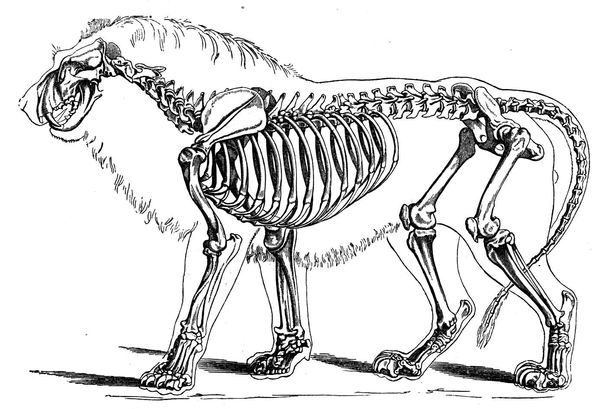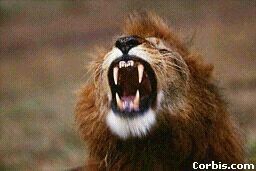 Evolution has built the lion to be quite an effective survivor. The graceful and fluid movement of a lion (as well as all cats) is achieved by having comparative less bone mass and more amount of muscle than other animals of similar SIZE. This gives the lion great strength, especially in the fore body. In fact, a lion is capable of breaking the spine of a zebra with a single swipe of a fore paw.
Anyone up for a slap contest?
Evolution has built the lion to be quite an effective survivor. The graceful and fluid movement of a lion (as well as all cats) is achieved by having comparative less bone mass and more amount of muscle than other animals of similar SIZE. This gives the lion great strength, especially in the fore body. In fact, a lion is capable of breaking the spine of a zebra with a single swipe of a fore paw.
Anyone up for a slap contest?
The lion can sprint at a 30 miles per hour (48 kilometers per hour) pace for 50 yards (46 meters) and jump 12 feet (3.7 meters) vertically or 36 feet (10.8 meters) horizontally.
I guess my moped isn't gonna suffice as an escape method.
A lion's hearing is not above average, but like most cats, it does have a rather acute sense of smell. It's smelling power is also augmented by a special organ, called a 'Jacobson's organ', located at the roof of the mouth.
Lions have good night vision, which is achieved not only by the eye's large SIZE, but also to a special feature in the back of the eye. Behind the retina (which is the light sensitive layer), is a reflective layer. This bounces light back over the retina again, giving light a second chance to be detected.
So much for me wearing those mirrored sunglasses at night!

|
Inside the mouth of the lion, there are 30 teeth that are well adapted for consuming meat. The front teeth are cone shaped to hold on to prey. The rear teeth (called carnassals) have adapted to shearing meat. To keep this teeth perfected ALIGNed, the lower jaw of a lion is unable to move side to side. The tongue has rough spines which are used to both rasp small bits of meat from bones and for grooming fur.
Like most carnivores, lions have relatively simple digestive systems, due to the easy digestion of meat. Lions can eat solid food at four weeks old.
And like all felines, soft pads on the paws allow the lion to move quietly. The claws are very sharp and are retractable. This allows the claws not only to remain sharp, but also prevents injuring others during play and other activities. An "extra" claw, called a dew claw, is located higher up the front legs - this is sometimes used as a toothpick.
To paraphrase Lewis Carroll: A lion may look good-natured, but with very long claws and a great many teeth, one ought to treat the creature with respect.

 Evolution has built the lion to be quite an effective survivor. The graceful and fluid movement of a lion (as well as all cats) is achieved by having comparative less bone mass and more amount of muscle than other animals of similar SIZE. This gives the lion great strength, especially in the fore body. In fact, a lion is capable of breaking the spine of a zebra with a single swipe of a fore paw.
Anyone up for a slap contest?
Evolution has built the lion to be quite an effective survivor. The graceful and fluid movement of a lion (as well as all cats) is achieved by having comparative less bone mass and more amount of muscle than other animals of similar SIZE. This gives the lion great strength, especially in the fore body. In fact, a lion is capable of breaking the spine of a zebra with a single swipe of a fore paw.
Anyone up for a slap contest?
